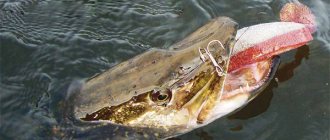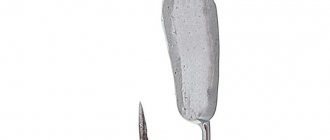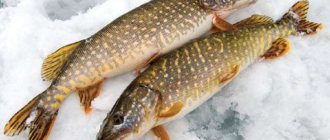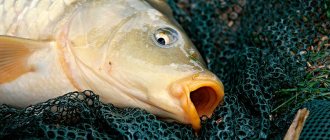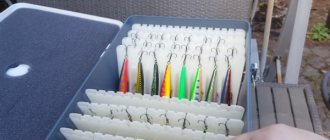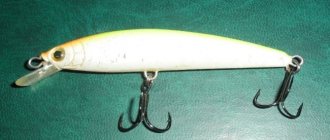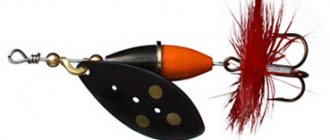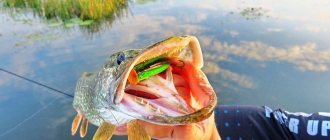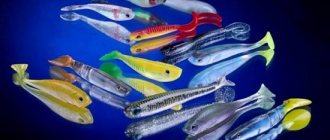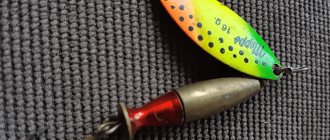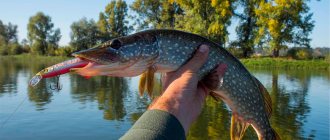Factors influencing color choice
The color preferences of predators are largely determined by illumination. To choose the right rubber color, you need to analyze the degree of illumination in the water and constantly experiment with the color of the equipment to increase the number of bites.
Each body of water has its own color palette of working baits. However, there are general principles that help determine the most successful equipment. Do not forget that the color preferences of predators change throughout the day almost hourly.
Water illumination depends on the following factors:
- Times of Day;
- water turbidity;
- depth of the fishing spot;
- weather.
Times of Day
As a rule, predators do not like the bright rays of the sun, so they choose shady places. And only very serious reasons (oxygen level in the water, temperature, availability of food) can force them to stay in the sun. When the water is clear, predators dive deeper. This behavior of the fish determines the color of the silicone.
The full moon, with a sufficient level of water transparency, is a source of light at night. In such a situation, with the right choice of silicone color, active pecking of the predator is possible.
Throughout the day, light levels increase from sunrise until lunchtime and decrease after lunch until sunset. Based on this, the optimal color of rubber should be determined: the darker it is outside, the lighter the bait should be and vice versa.
Water turbidity
In some reservoirs, the turbidity of the water is not always the same throughout the day. An increase in turbidity reduces the color spectrum visible to predators to a minimum. Only a few bright lures remain visible. With excellent transparency even at depth, dark silicone is preferable.
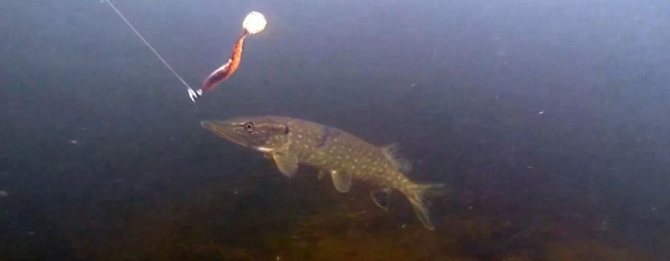
In clear weather and clear water, the color preferences of fish change depending on the position of the sun. At the beginning, rubber of yellow-green and white-pearl colors proved to be excellent.
For muddy water, you can successfully use light-colored equipment, due to the fact that they reflect sunlight, remaining highly visible to predatory fish.
Depth of the fishing spot
The choice of the color of the rubber used depending on the depth of the fishing spot is similar to the situation with increasing turbidity and the onset of twilight. The deeper the sun's rays penetrate into the water column, the more they are absorbed. Therefore, in low light in cloudy water, silicone of flashy colors, as well as light shades, is preferable.
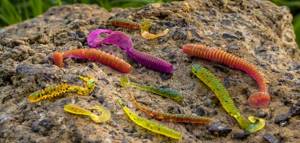
Weather
Often, with a constant level of water transparency, a crazy feeding of a predator suddenly begins, which then also quickly ends. It's all about changing weather conditions, such as clouds, which cause changes in light levels. In this situation, you should try lighter baits. Often it is enough to use a bait with a different back color.
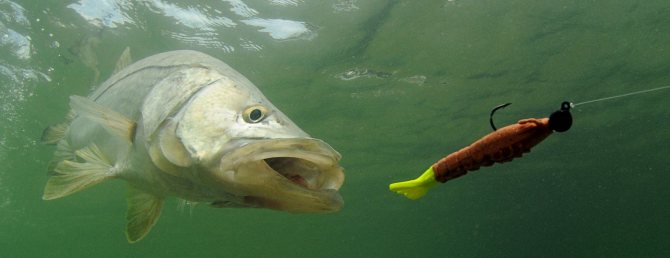
Catchable colors of silicone baits
All working silicone baits are very roughly divided into several groups.
Light baits
This group includes white, pearl and yellow baits. Due to their maximum similarity to the natural inhabitants of reservoirs, light-colored baits are the most popular among spinning anglers.
The predator is caught using bait of natural colors both in the morning and in the late afternoon, as well as in cloudy weather throughout the whole day. For this reason, a spinning player should have at least half of the total number of them in his arsenal.

Lures the color of machine oil
This is one of the most fashionable colors among jig and micro jig lovers. Sometimes glitter is added to the silicone to highlight the bait. Such baits are very effective when catching pike perch and pike perch, as well as a variety of peaceful fish. As a rule, silicone the color of motor oil is used from the moment the water clears until the end of the season.

Dark lures
Lures of dark colors can show excellent results in sunny weather, they are especially clearly visible against the background of a light sandy bottom. They often shoot out in cloudy water. Dark baits are best suited for simulating bottom plankton.
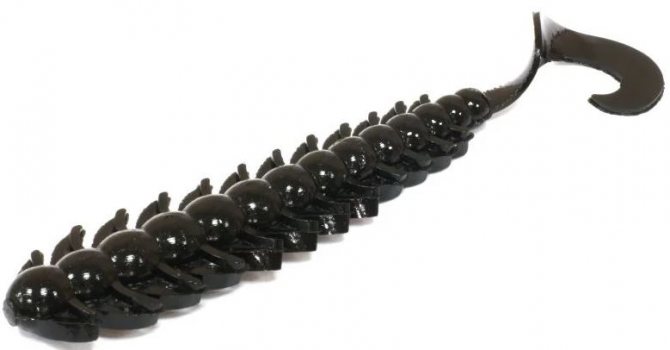
Red baits
During the summer heat or spawning period, many predators willingly grab red silicone baits. In addition, such baits are unrivaled when fishing for ide and chub. To imitate a worm or bloodworm, the best option would be red silicone.

Acid baits
Silicone of acid colors is used mainly in deep reservoirs, as well as in poor lighting. In addition, in the absence of a bite, it is precisely such equipment that can give a positive result.

Translucent lures
Transparent or translucent baits resemble a fry with its translucent body. The predator reacts to them both in bright sun and in cloudy weather. Completely transparent silicone is rare; mostly translucent baits interspersed with sparkles are used.
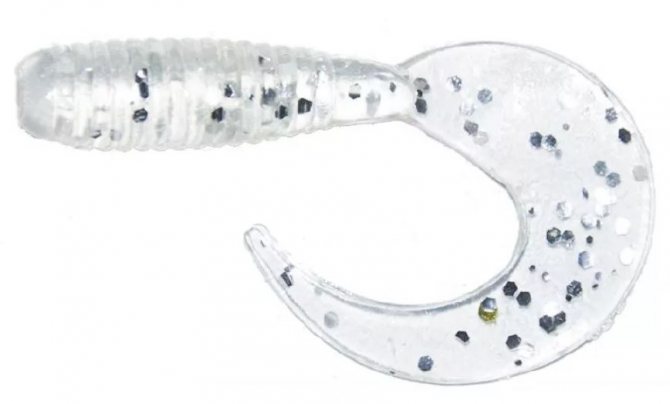
Ultraviolet baits
UV decoys are perfectly visible in sunlight. The most popular are ultraviolet brown baits, which appear purple in the light. In the overwhelming majority, during the day and when the bite is unstable, ultraviolet baits are the most catchy.
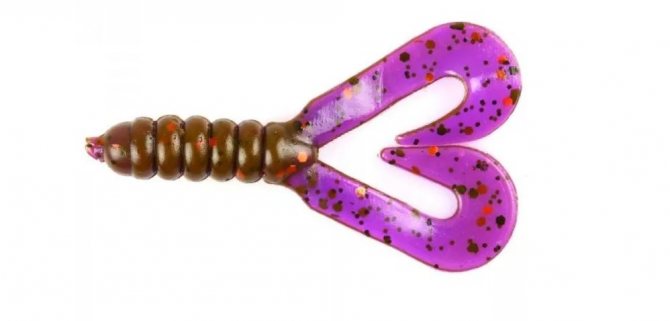
Lures with combined colors
Painting the bait with two or more colors is used to make the silicone more similar to the natural food of predators. Lures painted in two colors are considered more universal. The combined color is especially relevant when simulating fish. This technique is not often used for making shrimp and crustaceans. This group also includes baits with contrasting colors, which arouse increased interest among some predators.
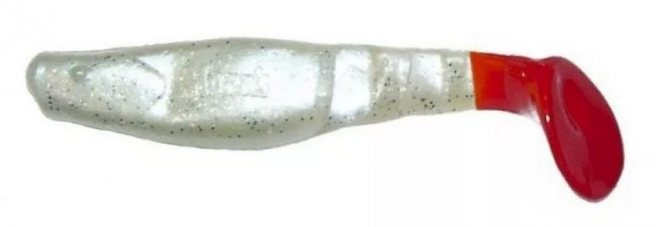
Lures with sparkles
The presence of glitter on the silicone makes the bait more noticeable. The sparkles, like narrow mirrors, reflect the sun's rays, giving off an attractive glare. It is advisable to use such silicone in cloudy weather or in poor lighting.
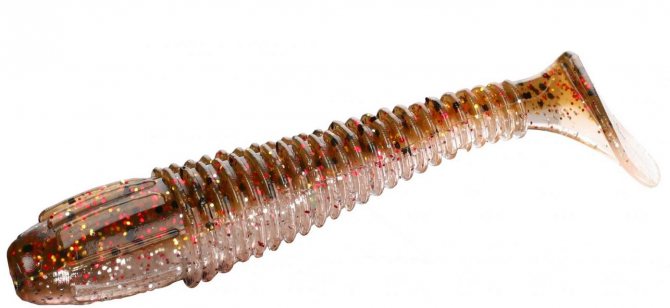
Phosphorescent baits
Any spinning angler’s arsenal should include phosphorescent baits that can accumulate light. Such baits work at depth in low light, as well as at dusk. A regular flashlight is suitable for charging phosphorescent baits.
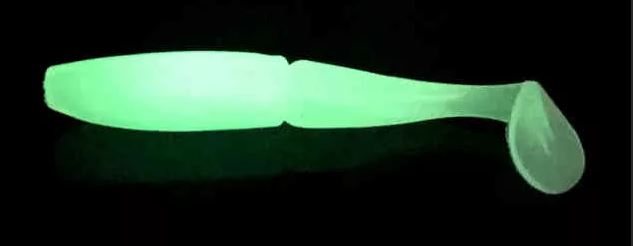
Lures for the winter
In winter, pike goes closer to the bottom and becomes inactive. It is becoming increasingly difficult to catch it, because practically no light penetrates through the thickness of the cold water. The best colors for pike are fluorescent, they have high catchability in dark conditions. It is better to choose a slow and calm retrieve for a spinning rod, since the predator prefers to conserve energy in the cold season.
If fishing takes place under ice, it is generally irrational to think about choosing the color of the bait. Even if the bait glows, lazy fish are difficult to attract with visual stimuli during this period.
The choice of odorous bait or feeding is important. In low light conditions, it is much easier to interest a predator with scent rather than color. It should also be remembered that if pike perch bites on the bait, then you should look for another place to catch pike. These fish compete for territory and are not found within the same area of the reservoir.
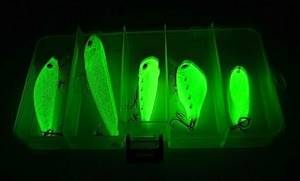
Glowing baits are suitable for winter fishing
Pike lure color
The spotted robber responds especially readily to light-colored silicone, as well as to baits of provocative colors, such as carrot, bright green and yellow-red.
But the choice of a specific color should be made based on the prevailing fishing conditions. So, in clear sunny weather, baits of light natural colors are preferable. When it is cloudy outside, the predator does not ignore the golden baits.
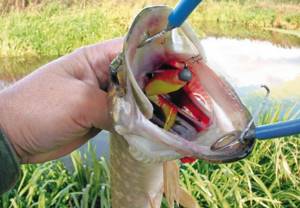
Lures of dark and black colors should be used in the spring, before the water has yet become clear. Also, black baits often save the day during periods of complete lack of biting. It is quite justified to catch pike using silicone motor oil.
At depth, baits of an acidic, provocative color are often fired; in addition, such bright baits are also effective in water with increased turbidity.
Review of catchable wobblers. Pike fishing in autumn. Photo. Video.
Catching pike in autumn with a wobbler
Over the past fishing year, a lot of pike using wobblers . After talking with amateur and professional fishermen live on forums, a rating of the most catchy wobblers was compiled.
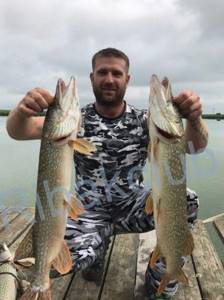
Let me make a reservation right away that this rating is not a golden rule, but a personal opinion and it may not coincide with yours. It is in the angler's arsenal that there should be only the best wobblers . all the most common baits into this list, and when one angler praises the wobbler , and the other, on the contrary, scolds the same thing! So let's get started.
Megabass KANATA 160
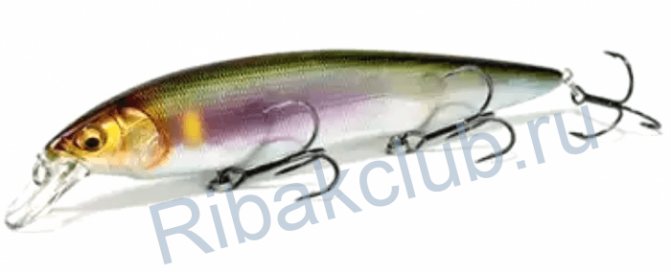
The best, most catchy wobbler. Available in several colors, it has a flat body similar to a spinner. Lures of green-yellow and brown-transparent colors proved to be more effective.
This wobbler is of a pop-up type, but it rises quite slowly, so intermittent wiring is not very effective. But the monotonous constant reeling of the cord, alternating with pauses, allows you to achieve many bites from the predator.
OSP Rudra 130 SP

A very good and catchy wobbler. It has a striped body similar in color to a perch. Many anglers praise this wobbler. Has neutral buoyancy , i.e. When it stops, it does not float up, but freezes in place.
Tiemco Jerkin Pepper 130
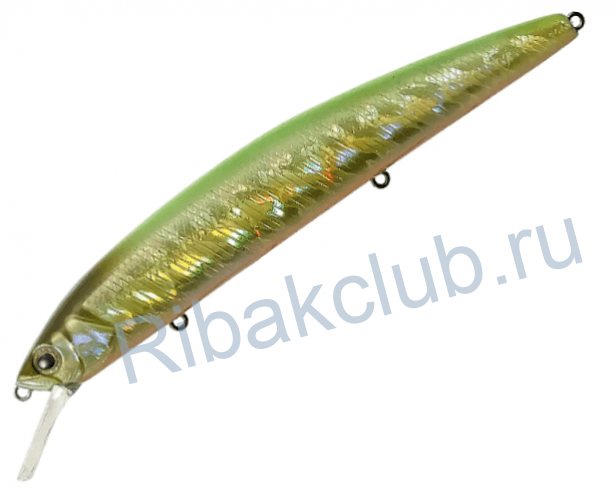
Very good in those moments when the pike doesn’t bite . It has a dark green back and a white body. They need to catch with periodic twitching and unexpected jerks, although monotonous fishing with pauses also shows results.
Jackall Rerange 130
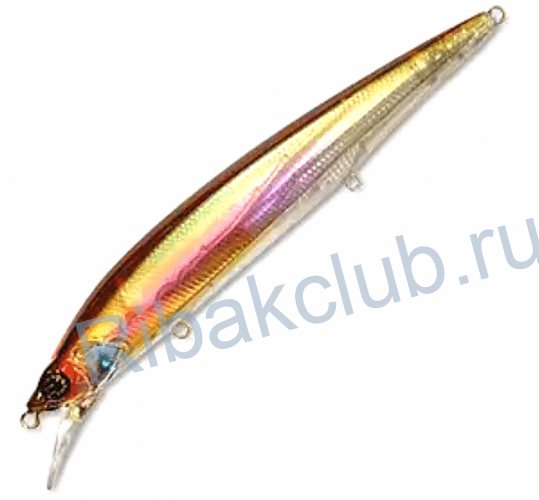
Wobbler with a gray-golden back and a gray-red body. Many fishermen do not really like , because... don't know how to use it. But if he opens up in the game, you won’t leave without a catch. True, there is one drawback , which is that this wobbler is mainly used by small pike (“laces”).
Rapala MaxRap 150
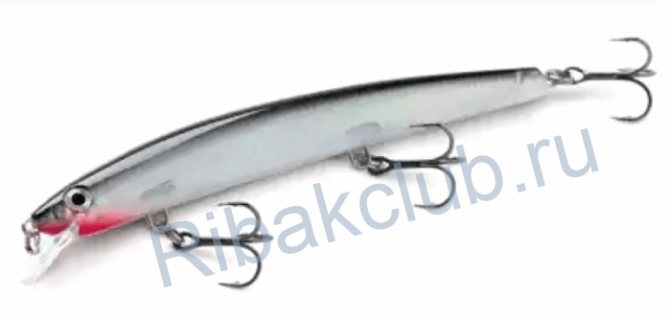
It has a dark green back with a transition to a white body and a yellow color at the head of the nozzle. A fairly successful model that opens on smooth wiring with the same smooth pulls. This wiring will probably be the most optimal. Moreover, it is worth noting that large perch like to peck at it.
OSP Varuna 110

Another wobbler from the OSP brand. It has a striped body in perch colors (dark green, black, light green). This attachment can be recommended to beginning spinning anglers who are just learning to fish with wobblers, because... This model works well on classic wiring without pauses or stretches.
StrikePro Inquisitor 110
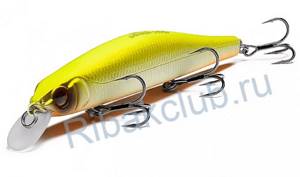
Quite a promising wobbler that always shows results . It has a bright green back and a yellow, fading to white body. Both small and quite heavy pikes can be tempted by it, i.e. it has some versatility.
Jackall Magallon
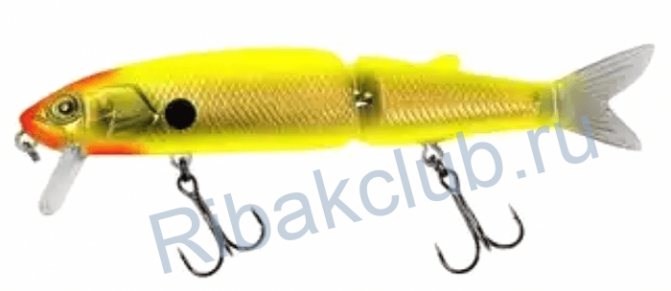
Not a very typical wobbler from those presented above. It has a body consisting of two parts. The color would be better suited to transparent yellow. perch is tempted by this wobbler .
OSP Asura
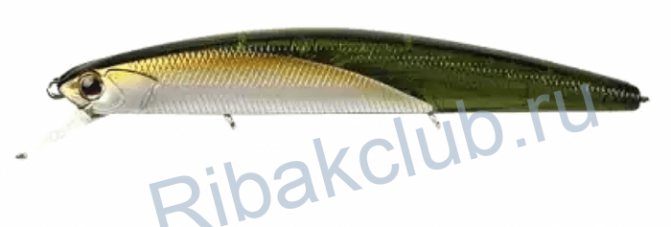
Wobbler with a dark brown back and a yellow-white body. Quite small, but despite its size it is very catchy .
Deps Balisong Minnow 130 SP
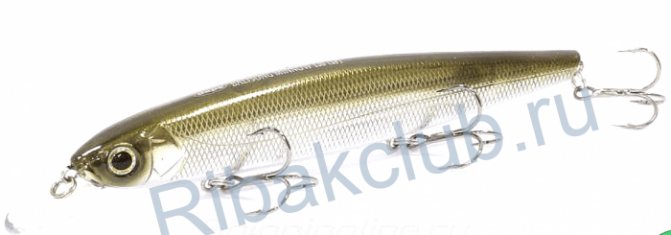
Wobbler with a dark green back, turning into a silver body. A distinctive feature of this bait is its resistance to water, i.e. when wiring, you need to use a spinning rod of greater dough than when wiring with other wobblers. But it has a small drawback - it has a short flight range. As already mentioned, not all of the “best” wobblers are on the list. If you bought this or that bait, but you can’t catch fish with it, don’t be discouraged, experiment with wiring, fishing location, etc. and you will definitely catch the coveted trophy with it. The main thing is to choose your own approach to each wobbler.
Happy fishing!
Color of baits for pike perch
For pike perch, the most catchy color of rigs is considered to be the color of motor oil. There are many variations of this color and these baits work differently in different situations. In some places, pike perch bite on the pure color of motor oil, and in others on a combination of this color with gold. In depth, you can try blue silicone with glitter.
Silicone in dark shades is effective during daylight hours, especially in the morning. After lunch, it is recommended to use light-colored tires. For fishing in the dark, luminous silicone is preferred.
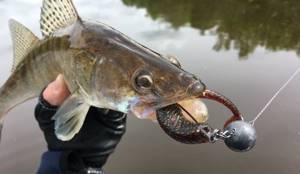
In cloudy water, as well as on hot days, bright provoking rigs are the most catchy. At the end of summer and with the onset of cold weather, silicone in natural shades works better. The colors of baits need to be varied, but it should be noted that pike perch prefer those models that resemble the natural inhabitants of the reservoir, for example, such as bleak or gudgeon. Pike perch is also attracted to silicone with a scarlet spot on the belly, imitating a wounded fish.
Lures for autumn
In autumn, wobblers should be selected according to weather conditions and the characteristics of a particular body of water. On sunny days with high transparency, you can resort to classic colors: black and red. Few people know about the existence of black baits, but this shade can also bring a catch, especially in reservoirs with a sandy bottom.
If the beginning of autumn (September-October) turns out to be sunny, baits of natural colors are also suitable. With the onset of November, when the weather is mostly cloudy, it is better to choose bright colors to indicate bait.
In autumn, the fish still retains mobility, although as the water temperature drops, it gradually moves deeper. This must be taken into account by consistently changing baits from less to brighter, as well as selecting buoyancy, which will gradually increase the vertical fishing area.
You need to be aware that when the fish goes under water more than 5 meters, the color of the bait loses its meaning. Only the smell, bait and adequate casting depth become significant.
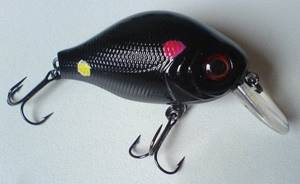
In autumn you can experiment with black baits
Color of lures for perch
Many experienced fishermen believe that dark baits are most readily grabbed by perch. In addition, silicone in natural colors is effective. Such rubber in the color of the food provides better results on the surface, as well as in clear weather in clear water.
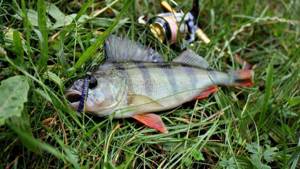
Active predators react, as a rule, to bright or acidic equipment. The perch sees such colors at a decent distance, and detects them faster than familiar objects. Acid colors provoke a predator to attack.
In winter, perch prefers silicone in blue and purple colors, in late autumn and early spring - translucent and with sparkles.
- Silicone baits for perch
- Molding silicone baits
- Choosing a vibrating tail for pike perch
- Edible rubber
The best colors of spinners for pike fishing
I have a question about choosing spinning lures. Tell me, what color of spinner does pike prefer in the fall and warm season? Is it true that the color of the bait is not very important?
It is generally accepted that among anglers there is still no consensus on the importance of bait color for catching pike. Some of them defend the theory of skillful presentation of the spinner without taking into account design excesses. Opponents argue that the shades of a twister, wobbler or spoon play a key role for a successful bite. If you look at the problem from a neutral angle, you can see the main thing: both of them rely on the peculiarities of the biology of the predator, which, when hunting, first of all trusts its vision, and then its smell, hearing and lateral senses. That is why, by correctly choosing the best colors for pike fishing for a specific river, pond, lake and meteorological conditions, you can count on a richer and larger catch.
The basic criteria for choosing a color for a pike are:
- dull color for sunny days;
- bright colors for cloudy weather;
- gloomy shades for dark water;
- catchy coloring, including acidic, for a muddy body of water.
In morning and evening twilight, cloudy weather, and rain, every reflection of the sun is important, which will give the bait a resemblance to fish scales. Glossy, bright lures that reflect light well are suitable. And, conversely, on fine days in clear water and in shallow water, it is better to avoid using baits that frighten the predator with their unnatural sparkle. When fishing at great depths, this problem goes away on its own due to insufficient water transparency, but the nuance of the bottom shade becomes important, since the likelihood of a pike attacking from the upper direction increases. If the reservoir has a sandy base, you need a contrasting bait of a dark color. Accordingly, for a clay, rocky or silty bottom, a light-colored spoon is selected.
To learn more:
Features of fishing with spoon spoons: pros and cons
In order to quickly adapt to fishing conditions and not be left without a trophy, you need to have a set of baits of different colors:
- natural - silver, brass, bronze, imitating carp species;
- acidic (neon) - light green, orange, yellow, fuchsia;
- perch shades - green-black, golden-brown, emerald-wheat stripes;
- dark – brown, red, black, olive.
It is important to always have a bait that imitates perch - this species is a food competitor of pike and is being exterminated en masse by it. Variegated acidic colors are clearly visible in any water and irritate the predator, provoking a rapid attack. In autumn, the best colors for pike fishing are silver, red, gold tones and their combinations.
